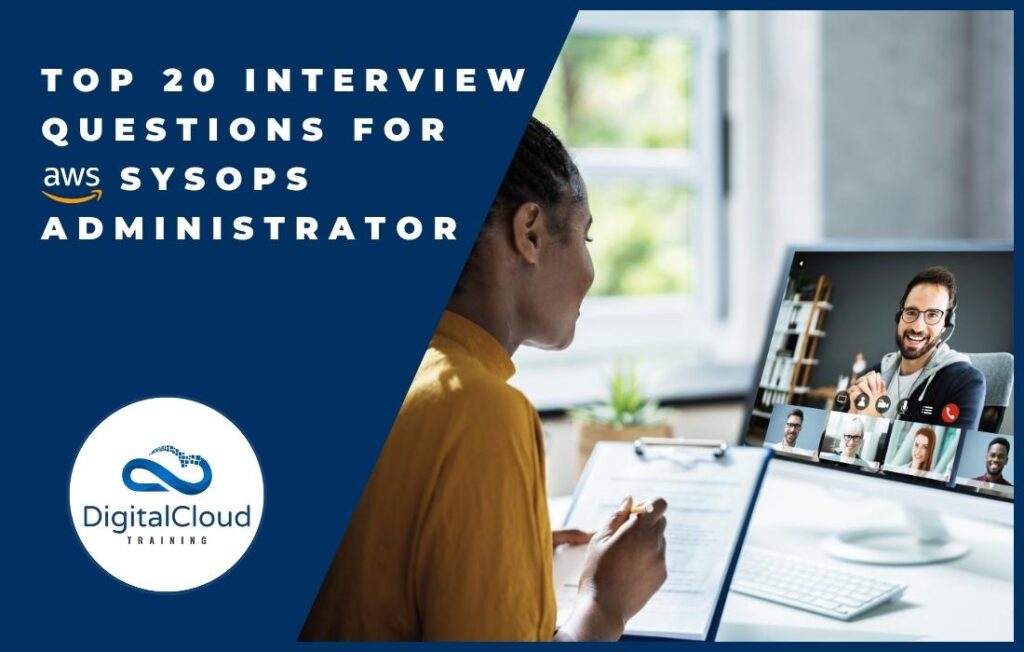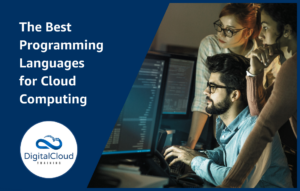Top 20 Interview Questions for AWS SysOps Administrator

Congratulations on receiving an invitation to interview for an AWS SysOps role! Now, the key to success is thorough preparation.
This article explores key interview questions designed to test the skills of candidates aspiring for SysOps Administrators roles.
In this article, we’ll explore key AWS SysOps Administrator interview questions designed to test the skills of candidates aspiring for system administrator roles in companies using AWS.
AWS SysOps Administrators play a pivotal role in managing, operating, and optimizing AWS cloud systems.
The AWS Certified SysOps Administrator – Associate proves you know the ins and outs of managing AWS systems. Whether you’re just starting or looking to prove your expertise, this certificate is a solid boost.
As organizations continue to migrate to the cloud and seek top-notch talent to ensure the smooth functioning of their infrastructure, the demand for skilled SysOps Administrators has surged.
The following 20 AWS cloud interview questions will help to prepare you for your AWS SyOps Administrator job interview. Let’s get started to ensure you’re fully prepared to impress in your interview.
- How do you manage and monitor your AWS infrastructure to ensure high availability and performance?
Answer: Managing and monitoring infrastructure in AWS involves:
- Using AWS CloudWatch to monitor resource utilization, system-wide performance metrics, transaction volumes, and latency, setting alarms based on specific thresholds.
- Implementing AWS Auto Scaling to maintain application availability and balance capacity.
- Utilizing AWS Trusted Advisor to optimize AWS environment, reduce costs, boost performance, and increase security by inspecting your AWS environment.
- Employing AWS CloudTrail to enable governance, compliance, operational auditing, and risk auditing of your AWS account.
2. Explain the Shared Responsibility Model in AWS.
Answer: The Shared Responsibility Model in AWS delineates the security functions that are provided by AWS (security of the cloud) and those that must be provided by the customer (security in the cloud). AWS is responsible for protecting the infrastructure that runs AWS services, which includes hardware, software, networking, and facilities. Customers, on the other hand, are responsible for customer data, identity and access management, operating system, network and firewall configuration, application security, and data encryption needs.
3. How do you ensure data integrity and security in AWS S3?
Answer: Data integrity and security in Amazon S3 can be maintained by:
- Using S3 Versioning to keep multiple variants of an object.
- Implementing SSL/TLS to encrypt data in transit to S3.
- Employing S3 Server-Side Encryption (SSE) for data at rest.
- Leveraging S3 Bucket Policies and IAM Policies to manage access to S3 buckets.
- Utilizing AWS KMS to manage encryption keys used by SSE.
- Implementing MFA Delete to provide an additional layer of security by requiring MFA to delete S3 objects.
4. What is the purpose of an Amazon VPC, and how is it beneficial from a security standpoint?
Answer: Amazon Virtual Private Cloud (VPC) allows you to provision isolated sections of the AWS Cloud to launch AWS resources in a virtual network you define. It is beneficial for security because it provides:
- Network segmentation (public and private subnets).
- Control over inbound and outbound network traffic via network access control lists (ACLs) and security groups.
- VPN connections for secure communication with your corporate network.
- Dedicated, hardware-based VPN appliance for enhanced security.
- The ability to use AWS IAM to set up and enforce policies for VPC-related resources.
5. How do you handle disaster recovery and backups in AWS?
Answer: Disaster recovery and backups in AWS are handled by:
- Implementing routine backups with Amazon RDS snapshots and Amazon EBS snapshots.
- Using AWS Backup to centralize and automate data protection across AWS services.
- Ensuring version control in Amazon S3 to recover from both intentional and unintentional data deletions.
- Employing Amazon S3 Cross-Region Replication (CRR) for lower-latency data access and enhanced disaster recovery.
- Creating and implementing a disaster recovery plan with services like AWS CloudEndure which provides continuous replication of your virtual machines.
6. How do you identify and mitigate a DDoS attack on your AWS infrastructure?
Answer: DDoS attacks can be identified and mitigated in AWS by:
- Employing AWS Shield, particularly the Advanced version, to provide extended DDoS attack protection.
- Implementing AWS WAF to protect web applications from common web exploits.
- Using Route 53 and AWS CloudFront to absorb and deflect the attack traffic.
- Monitoring network traffic and load balancer logs using Amazon CloudWatch.
- Restricting traffic to your application using security groups and network access control lists (ACLs).
7. What steps should be taken to troubleshoot an instance that is failing a status check?
Answer: For an instance failing a status check, consider the following steps:
- Review the System Log on the EC2 console for diagnostic information.
- For System Status Check failure, you can try stopping and starting the instance (for EBS-backed instances), which migrates it to a new host.
- For Instance Status Check failure, ensure the software is correctly configured and the instance is properly booting.
- Use the AWS CLI or Amazon EC2 API to investigate and interact with the instance.
- As a last resort, create an AMI of the instance to restart it on new hardware.
8. How do you manage configuration changes in an AWS environment?
Answer: Configuration changes can be managed by:
- Utilizing AWS Config to monitor and record AWS resource configurations and changes.
- Employing AWS CloudFormation for infrastructure as code, to automate the provisioning and update of your AWS services.
- Implementing AWS OpsWorks for configuration management using Chef or Puppet.
- Leveraging AWS Systems Manager for grouping resources and applying actions, configurations, and compliance checks across those groups.
9. How can you automate OS patching of EC2 instances?
Answer: OS patching for EC2 instances can be automated by using:
- AWS Systems Manager Patch Manager to scan and apply patches to your EC2 instances.
- AWS OpsWorks for Chef or Puppet, automating tasks through recipes or manifests, including OS patching.
- Creating and deploying custom AMIs with pre-applied patches for new instances or using them in an Auto Scaling environment.
10. What strategies would you use to optimize the costs of AWS infrastructure?
Answer: Optimizing AWS infrastructure costs can be achieved by:
- Implementing Auto Scaling to match resource supply with demand.
- Using Reserved Instances or Savings Plans to reduce costs over time with a commitment to consistent usage.
- Employing Spot Instances for flexible, interruption-tolerant workloads to take advantage of lower prices.
- Taking advantage of AWS Trusted Advisor cost-optimization recommendations.
- Regularly reviewing and cleaning up unused resources or rightsizing instances to match workload needs.
- Implementing data lifecycle policies in services like Amazon S3 to move data to cheaper storage classes or archive them.
- Monitoring billing and cost management tools provided by AWS to analyze and manage service expenses.
11. How do you maintain compliance in an AWS environment?
Answer: Compliance can be maintained by:
- Utilizing AWS Config to evaluate and ensure AWS resource configurations meet compliance rules.
- Implementing AWS CloudTrail to log, continuously monitor, and retain account activity.
- Using AWS Organizations to set up Service Control Policies (SCP) for centralized control across multiple AWS accounts.
- Employing AWS Artifact to access on-demand AWS compliance reports.
- Regularly reviewing IAM roles and permissions for the principle of least privilege.
12. How does AWS Lambda help in automating operational tasks?
Answer: AWS Lambda allows you to run backend code in response to events (e.g., HTTP requests via Amazon API Gateway, database changes in DynamoDB, etc.) without provisioning or managing servers. This serverless computation can help in:
- Automatically backing up data.
- Sending notifications in response to specific triggers.
- Performing health checks and auto-remediation in response to infrastructure changes.
- Automatically managing resources based on custom logic without manual intervention.
13. Describe the role of Amazon CloudFront in AWS infrastructure management.
Answer: Amazon CloudFront is a content delivery network (CDN) that integrates with other Amazon Web Services to distribute content with low latency and high transfer speeds. Its roles include:
- Caching frequently accessed content at edge locations close to end-users to reduce latency.
- Integrating with AWS Shield for DDoS protection.
- Enhancing application security by integrating with AWS WAF.
- Serving as a distribution system for static and dynamic web content, ensuring optimal user experience.
14. How can you secure data in Amazon RDS?
Answer: Amazon RDS data can be secured by:
- Encrypting data at rest using AWS Key Management Service (KMS).
- Encrypting data in transit using SSL/TLS.
- Implementing IAM policies and database authentication for controlled access.
- Routinely backing up data and enabling automatic snapshots.
- Utilizing security groups to define who can communicate with the database.
15. How do you monitor resource utilization and API usage in AWS?
Answer: Monitoring in AWS can be achieved by:
- Employing Amazon CloudWatch to track metrics, set alarms, and visualize logs.
- Using Amazon CloudTrail to log, monitor, and retain API call histories.
- Implementing AWS X-Ray for tracing user requests to identify bottlenecks and troubleshoot applications.
- Analyzing VPC Flow Logs to monitor IP traffic in your VPC.
16. Describe the importance of AWS Systems Manager.
Answer: AWS Systems Manager provides visibility and control of infrastructure on AWS. Its importance stems from:
- Unified operational data view across AWS resources.
- Remote management of EC2 instances and on-premises nodes.
- Automation of operational tasks like patch management.
- Secure storage and retrieval of parameters and secrets.
- Application configuration management across instances.
17. How would you improve data transfer rates into and out of AWS?
Answer: Improving data transfer rates can be achieved by:
- Using Amazon Direct Connect for a dedicated network connection from on-premises to AWS.
- Employing AWS Snowball or Snowmobile for large-scale data transfer.
- Optimizing and compressing data before transfer.
- Utilizing Amazon CloudFront for caching content at edge locations.
- Implementing S3 Transfer Acceleration for faster uploads to S3.
18. How do you troubleshoot latency issues in AWS?
Answer: Latency issues can be troubleshooted by:
- Analyzing Amazon CloudWatch metrics for performance insights.
- Using AWS X-Ray to trace requests and detect bottlenecks.
- Reviewing Amazon RDS Performance Insights for database activity.
- Evaluating network configurations and optimizing VPC peering connections.
- Placing resources in the same region and availability zone to reduce internal AWS latencies.
19. How would you handle secret management in AWS?
Answer: Secret management in AWS is crucial for security. It can be handled by:
- Using AWS Secrets Manager to rotate, manage, and retrieve secrets.
- Storing secrets as encrypted parameters in AWS Systems Manager Parameter Store.
- Encrypting secrets using AWS Key Management Service (KMS) and managing access with IAM.
20. What strategies would you use to ensure continuity in case of regional AWS outages?
Answer: Ensuring continuity during regional outages involves:
- Designing applications to be multi-region.
- Using Amazon Route 53 for DNS failover to reroute traffic to healthy regions.
- Implementing Amazon S3 Cross-Region Replication for data backup in another region.
- Regularly testing failover mechanisms to ensure they work as expected during an actual outage.
The role of an AWS SysOps Administrator is crucial in today’s cloud-centric world. These interview questions offer insights into the essential knowledge and skills for the position.
For candidates, they serve as a valuable preparation tool, and for employers, they help identify the right talent.
We wish all aspiring candidates the best of luck and success in their interviews – and keep in mind, being well-prepared is paramount.
Ready to Take Your Tech Career to the Next Level?
At Digital Cloud Training, we’re dedicated to your success. Our courses offer up-to-date content, equipping you with the expertise to stand out in the competitive tech job market.
Our On-Demand Training allows you to learn at your own pace, fitting seamlessly into your schedule. Dive into the world of cloud computing whenever and wherever suits you best.
Our Challenge Labs provide practical, real-world scenarios where you can apply your newfound knowledge without the risk of unexpected cloud costs. Gain hands-on experience and sharpen your skills.
For those seeking an immersive experience, our Cloud Mastery Bootcamp delivers live, job-ready training. Led by industry experts, this accelerated program can get you certified faster than you thought possible.
It’s time to propel your tech career forward. Join us at Digital Cloud Training and unlock your full potential in the world of cloud computing.





Responses